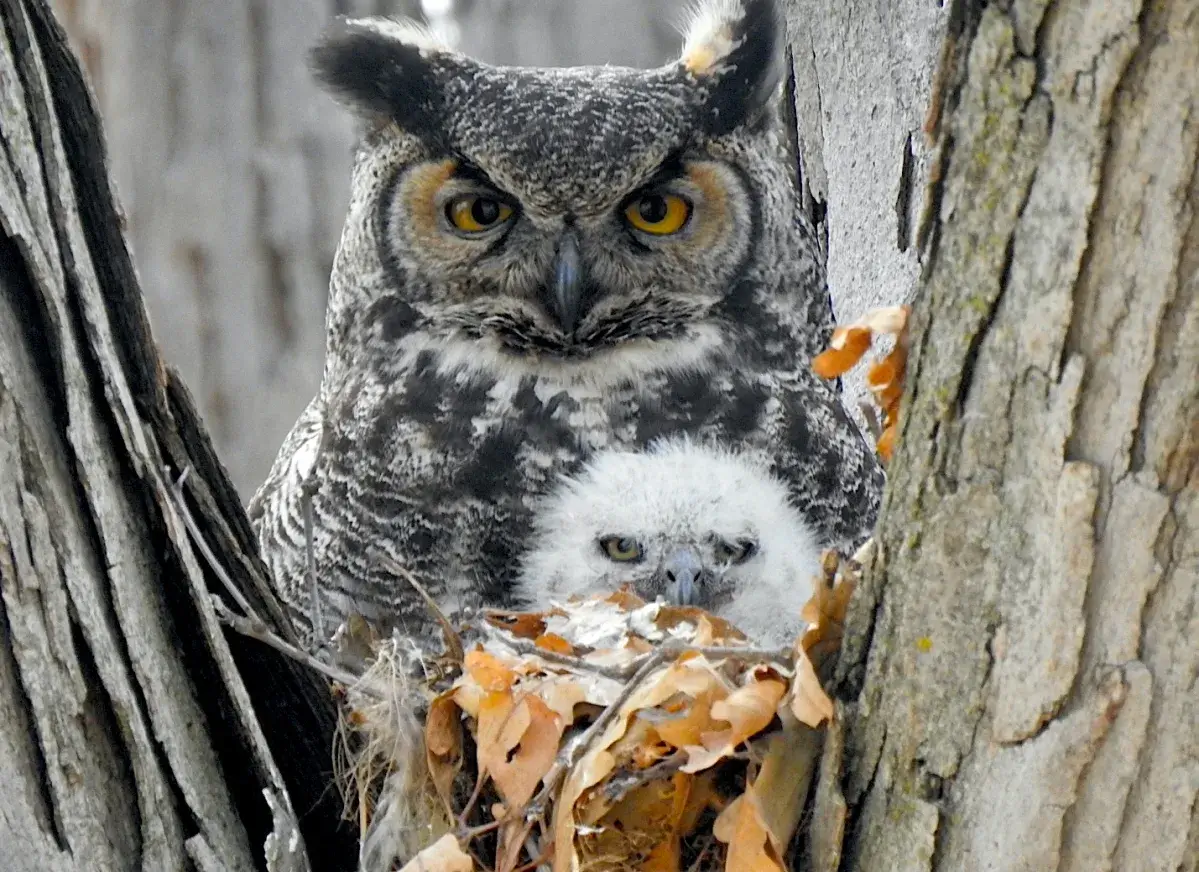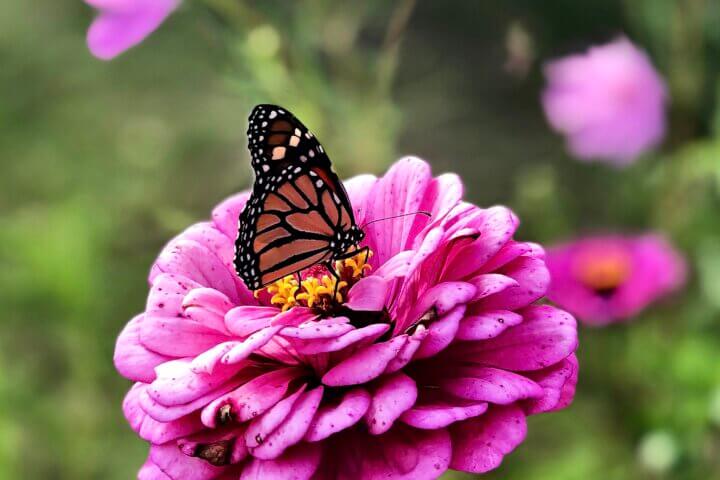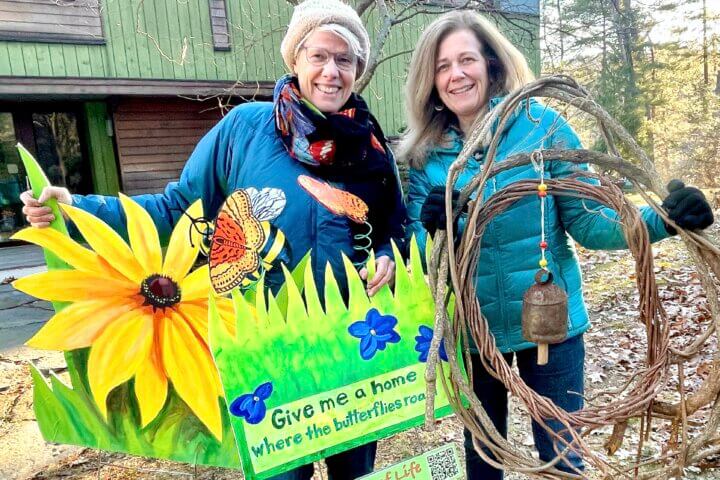By Wilson Kerr
Writing about animals we rarely see in the wild can be a challenge. Owls are one such species, and yet they occupy a very prominent role in popular culture, especially in books and movies. Because of this, most people can generally describe an owl, but how much do we really know about them?
Yes, owls live right here in Concord, gliding through our woods and over our fields, hunting under the cover of darkness. This month I hope to bring some new facts about owls to light.
Like hawks and eagles, owls are raptors. But unlike hawks and eagles, most owls are active only at night, which is why we seldom see them. While many animals are nocturnal (think racoons, possums, bats, skunks, etc.), owls are specialists – true masters of the night sky.
Owls have three characteristics that enable them to thrive while most of us are tucked into our beds. The first is the most amazing (to me). Called “silent flight”, this unique adaptation is caused by tiny, comb-like serrations on the leading edge of their large wings and tiny filament-like fringes on the back. This is called “fluting” and it almost totally dampens the “flapping” sound you hear when most birds fly.
When I have seen an owl, usually in the early morning or just before dark, it’s almost like someone has hit the mute button on the forest’s remote. I clearly see a large bird is flapping through the trees, but only afterward does it occur to me that I heard no sound. This ability to fly without making a sound gives owls a big advantage when hunting.
The second in their eyes. Owls’ eyes are massive compared to their bodies, allowing them to absorb enough light to see in near total darkness. Their night vision means they can hunt prey on even the blackest of nights when their prey cannot see them coming. Unlike most other animals, owls do not have round eyeballs. Their eyes are actually cylinders, shaped like a toilet paper roll and do not move. Because they cannot move their eyes, they have to move their heads to look in different directions and this gives them perhaps their most-famous adaptation – the ability to rotate their heads nearly all the way around (270 degrees)!
And the third feature giving them this mastery of the nighttime hunting is their distinct round, flat “face”, which gives them the best hearing of any animal on earth. Sound is captured and directed to their ears – which are actually holes in their skulls on the front of their feathered “facial disc”. Perched high on a branch, owls can hear a mouse’s tiny claws scratching far below on the forest floor. This, with their incredible eyesight and ability to fly silently, makes them an unmatched nocturnal predator on the wing.
Owls spot their prey, swoop noiselessly down and use their strong talons to grab and crush. Owls eat a variety of small animals and even other birds, but here in New England, they mostly hunt and eat rodents like mice, which they swallow whole. But, since owls cannot digest the bones and fur swallowed with the rest of the mouse, they have to periodically regurgitate an “owl pellet”. These pellets are usually grey and oval or finger-shaped and can be found at the base of their favorite perch tree – usually a large pine. They are not stinky and finding one can be a CSI adventure, as drying it and gently prying it apart shows you what the owl has been eating, by the tiny bones it contains.
Most people know that owls “hoot”. They do this to alert other birds of their presence and to defend their territories, but they also make lots of other noises – whistles, barks, coos and shrieks. Because the “hoots” are purposefully loud (to announce their presence), these are the owl sounds we most often hear. You can listen to different owl sounds here.
Did you know? Native Americans considered owls sacred animals that were stewards of ancient wisdom and power. Warriors would carry “owl bundles” of feathers with them to help them remain silent and so they could see their enemies better.
While there over 250 species of owls in the world, here in New England we have 9 resident species and 3 that are most-common. The Barred Owl, the Northern Screech Owl and the Great Horned Owl. Of these, the Great Horned Owl is the most well-known.
Great Horned Owls are the largest owl species we have locally, standing 2 feet tall, with a wingspan of nearly 5 feet. They do not have horns, but tufts of feathers give them this appearance – and their name. They are striking to see, with large yellow eyes and stunning camouflage colored plumage.
The much-smaller Screech Owls are my favorite, as they have a spooky, beautiful call, that sounds like a cross between a cat purring and loon.
Barred Owls are common in New England and are a medium sized owl, known for the unique “who cooks for you?” pattern to their hoots. If you have ever been to Drumlin Farm, you have likely seen their 3 barred owls on display. They get their name from their distinctive, vertically striped camouflage chest feathers.
Owls are not only beautiful, but they are an integral part of our ecosystem. They act as natural pest control for mice, a key vector for deer ticks. And this brings me to a cautionary tale. Many people poison rodents with D-Con or other chemical rodenticides. These anti-coagulants are popular poisons because you don’t see the dead mice, but they cause death slowly and owls often spot the stricken animal as an easy meal. By eating the poisoned mice, the owls are also poisoned. Studies show that most owls have these chemicals in their systems and this is a growing problem, threatening owls nation-wide.
The good news is that the solution is easy and inexpensive, as old-fashioned snap-traps cost just $.50 cents each, are instantly lethal to mice, and do not kill owls and other predators through secondary poisoning.
Nature operates at all hours, with each piece of the puzzle playing its role. Each night owls, these masters of our night skies, take flight on silent wings, out over our woods and meadows, seeing in pitch darkness and rotating their wide faces to catch the faintest sounds of prey below. Until next month, I hope you will spend some evening Time Outdoors, and maybe you will hear the hoot of an owl telling you they are there (and thanking you for using snap traps and a little peanut butter).
____________________
Wilson Kerr lives in Concord and is an avid outdoorsman and amateur naturalist. This column is designed to help grow awareness of the wonders of nature. In this increasingly fast-paced and technology-packed world, it is important to stop and take in the beauty of our area and the animals that inhabit it. The author hopes this recurring column will be read by families and used as a teaching tool and that you will spend more… Time Outdoors.





